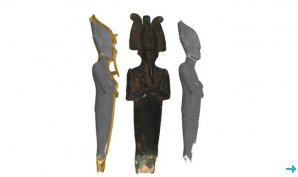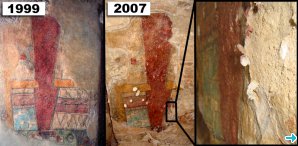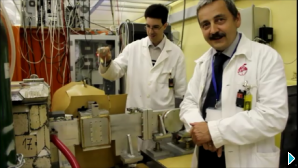Heritage science
Overview
All crystalline material – metal, pigments, rock, ceramics – can be analysed by neutron diffraction.
Neutrons are an invaluable tool to analyse precious archaeological objects: they are non-destructive and can penetrate deep into the cultural artefact or beneath the surface of paintings, to reveal structures at the microscopic scale, chemical composition or provide 3D images of the inner parts of the artefacts.
For heritage science purposes, whole artefacts can be placed in the neutron beam and analysed at room conditions, without sample preparation. Analysis can also be done under vacuum or other conditions, such as high or low temperature. The measurements are made in real time, which can be useful for testing conservation materials and methods.
Neutron tomography and radiography provide information about interesting inner parts of the object, which can be subsequently analysed by other neutron techniques for more detailed information.
Activation analytical methods allow to study the elemental composition of virtually any material and object, which can be used to determine the geographical origin of an object.
Neutron scattering methods
For archaeology and cultural heritage studies, crystallographic analysis by time-of-flight neutron diffraction allows to quantitatively determine the crystallographic parameters and phase content of a material.
Neutrons have much greater penetrating power than X-rays, so whereas X rays are useful for small powder samples and surface analysis, ToF-ND can go right through thick samples of bronze or steel for example.
Small-angle neutron scattering has been used for studies on samples of different types of paper and ancient paper. These studies have yielded details of the surface morphology of cellulose fibres, the spatial distribution of water-filled pores, and the increasing dimension of water domains in cellulose as degradation occurs, and allowed for methods for the prevention of paper ageing to be developed.
Nuclear analytical techniques such as Prompt Gamma Activation Analysis (PGAA), Neutron Activation Analysis (NAA) or Neutron Resonance Capture Analysis (NRCA) are used routinely in cultural heritage studies. They allow for non-destructive chemical analysis of historical artefacts, with little or no sample preparation. For example, PGAA and NAA can give useful information about the origin of the findings based on the ´fingerprints´, or typical patterns in the trace element compositions of the raw materials and of the object, while NRCA can be used for studies of bronze and brass objects.
Combining these methods provides invaluable information for cultural heritage studies. The EU Ancient Charm (FP6) project brought together large scale neutron facilities and museum scientists in order to develop new methods and techniques for the analysis of cultural artefacts and resulted in the development of new imaging techniques with neutrons.
A new technique called Neutron Tomography-driven Prompt Gamma Activation Imaging (PGAI-NT) is a powerful tool for the investigation of complex precious cultural heritage objects. It combines the advantages of both neutron imaging and prompt gamma activation analysis: the internal structure can be investigated using neutron imaging, and then the internal details can be analysed with PGAA.
Using this method, this fibula from the 6th century found in western Hungary (see figures) could be investigated. Without disassembling the precious jewel, its internal structure and composition could be studied in detail. Its origin, most probably a German workshop, could also be determined using this technique.



